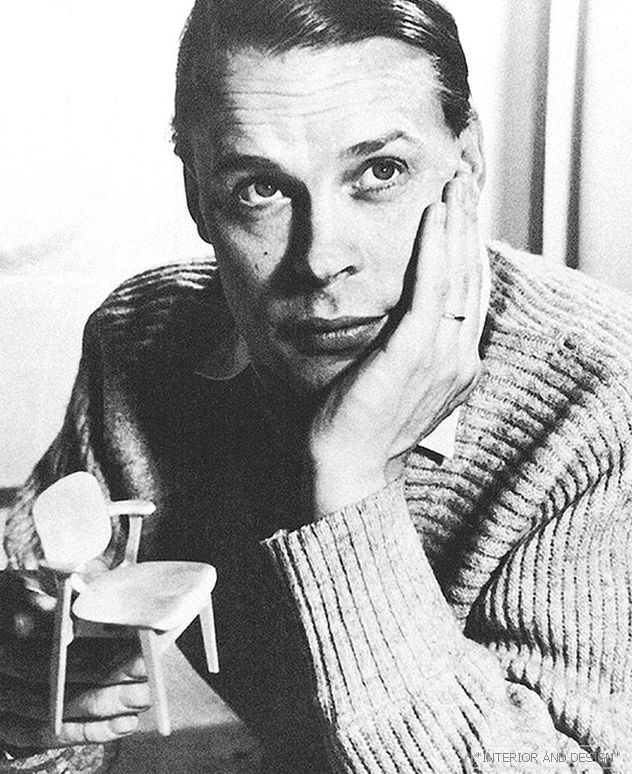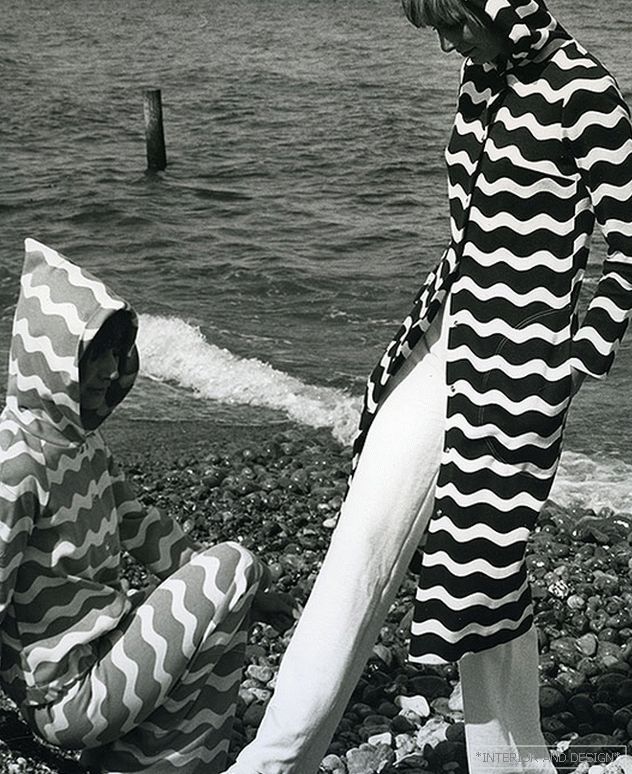Finnish design is available to everyone. Regardless of age, gender or origin. Objects invented by the Finns eighty, fifty or thirty years ago are still used by people all over the world.
Related: Jukka Savolainen: 5 iconic figures of Finnish design
The exhibition “33 Revolutions - 100 Years of Finnish Design” opens on November 16 in the Multimedia Art Museum. It was organized in cooperation with the Moscow Design Museum and was timed to the centenary of the Independence Day of the neighboring country (until December 6, 1917, Finland was part of Russia). Design by the Finns is perceived as a motor of well-being and a means to improve the quality of life.
 Eero Saar. Ctulya Tulip, Knoll. 1957.
Eero Saar. Ctulya Tulip, Knoll. 1957. Finnish design reflects social change and changes society itself. In particular, design decisions play a huge role in health care and education. Two examples speak eloquently about this.
 Finnish mother package in box. 1950s.
Finnish mother package in box. 1950s. Why do Finnish babies sleep in a box? In 1938, the Finnish state began to distribute the “mother package” free of charge - a set with the most useful things for the newborn and the mother. Thus, the government tried to solve the problems of a catastrophic decline in the birth rate and a high infant mortality rate. In 1942, the "mother bag" was packed in a cardboard box with a mattress. At first, the packages were given out to the poor (two thirds of the women in the country belonged to them), and after the war every woman who received a doctor in the first months of pregnancy could receive a cradle box.
 In 2017, the mother package made famous in Finland consists of 56 items.
In 2017, the mother package made famous in Finland consists of 56 items. The box still retains its popularity as the first cot - regardless of family income. Finnish mothers can choose cash allowance instead (140 euros), but more than 90 percent choose a package. In the summer of 2017, he was represented at the UN forum in New York. Finnish diplomats are confident that their practice can be maximized in the world. Kela’s entrepreneurs have already taken numerous private box orders from the USA and Australia.
The exhibition includes such masterpieces as a chair designed by Alvar Aalto for the Paimio Tuberculosis Sanatorium (1930s) - its design helped the patients recover; the innovative fiberglass Eero Aarnio ball chair (1960s); Tapio Virkkala's Ultima Thule glasses for Finnair and even Bjorn Vekström's Asteroid Valley necklace, which decorated Princess Leia in the Star Wars movie
 Alvar Aalto. Paimio. Artek. 1932. At the sanatorium patient who had leaned back in his chair, the chest opened: looking up he was breathing deeply. The chairs stood under the blue ceiling, whose brilliant surface reflected the trees outside the window.
Alvar Aalto. Paimio. Artek. 1932. At the sanatorium patient who had leaned back in his chair, the chest opened: looking up he was breathing deeply. The chairs stood under the blue ceiling, whose brilliant surface reflected the trees outside the window. How one school changed the image of the city A recent example of the social function of Finnish design is the Kirkkojärvi School (2011). The Verstas Arkkitehdit project has won many international competitions. A school for 770 children was built in the metropolitan suburb of Espoo, in an area where low-income families and migrants live. Its director is similar to the Italian fashion designer and speaks brilliantly in English, and students (among whom 5o are from Russia) are amazed with academic performance, knowledge and desire to learn.
 School Kirkkojärvi, Espoo. Project Verstas Arkkitehdit. International Architecture Award 2011.
School Kirkkojärvi, Espoo. Project Verstas Arkkitehdit. International Architecture Award 2011. “We wanted to create a school that works like a small town,” says architect Jussi Palva. - All classes look like home with their own lobby and entrance areas. Each zone has its own color scheme, which allows children to better navigate. ”In the lobby there are round tables and even sofas on which the student can work with a laptop. Primary school classes are focused on the morning sun, and the average one, whose classes are longer, is on day time. The school has extensive courtyards (in Finland, children are recommended to spend all the breaks outdoors), and the wooden facades facing them are protected by long cornices. The building uses geothermal and solar energy. A complex project worth 30 million euros was implemented by the concern YIT, known in Russia as the developer of the comfort-class housing.
 Ilmari Tapiovaara with model of the chair Domus Chair, 1946
Ilmari Tapiovaara with model of the chair Domus Chair, 1946  Eero Aarnio. Armchair ball (1963) and chair Pastil (1967).
Eero Aarnio. Armchair ball (1963) and chair Pastil (1967).  Maya Isola. Print "Seagull". Marimekko. 1961
Maya Isola. Print "Seagull". Marimekko. 1961  Майя Изола. Print Unikko. Marimekko. 1964
Майя Изола. Print Unikko. Marimekko. 1964  Kai Frank Service Kilta. 1948 -1952. © Rauno Traskelin
Kai Frank Service Kilta. 1948 -1952. © Rauno Traskelin Among the bureaus that presented the exhibits were Anttinen Oiva architects, Avanto Architects and others. Some of the objects were brought from the museums of Design Museum Finland and the Museum of Finnish Architecture. As part of the educational program, Irena Kostas, director and designer of Onar Studios will talk about a new wave in Finnish fashion design: what innovations and environmental values have allowed Finnish young designers to win recognition.
 Onar Studios
Onar Studios The exhibition runs from November 16 to December 17, 2017. Multimedia Art Museum, Moscow.



